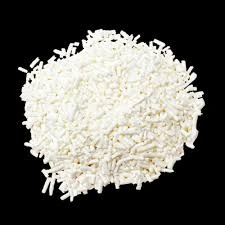
e1412 food additive
The Impact and Regulation of E1412 Food Additive
E1412, known as hydroxypropyl distarch phosphate, is a food additive derived from starch that plays a significant role in enhancing the texture, stability, and overall quality of food products. This ingredient is widely used in the food industry due to its unique properties, which we will explore in this article. We will also discuss its regulatory background and potential health implications.
What is E1412?
E1412 is a modified starch that undergoes a chemical process to improve its functional characteristics. It is typically derived from sources such as corn, potato, or tapioca. The modification process involves the introduction of hydroxypropyl groups to the starch molecule. This alteration enhances the starch's ability to withstand extreme temperatures and various pH levels, making E1412 an excellent thickening and stabilizing agent in a wide range of food products.
Applications of E1412 in Food Products
E1412 is utilized in many food items, including sauces, dressings, soups, and dairy products. Its ability to provide a smooth texture and improve the mouthfeel makes it a preferred choice for manufacturers aiming to enhance their products' sensory attributes. Additionally, E1412 can help stabilize emulsions, control the viscosity of sauces, and prevent the separation of ingredients in various formulations.
One notable application of E1412 is in instant food products, such as instant noodles and soups. It helps maintain the desired texture and prevent clumping when these products are rehydrated. This property is particularly important in today’s fast-paced lifestyle, where convenience foods are gaining popularity.
Regulatory Status
e1412 food additive

E1412 is recognized as safe for consumption by various international regulatory bodies. In the European Union, it is classified under the food additives regulation and is assigned an E-number, which is a standard way of identifying food additives. The European Food Safety Authority (EFSA) evaluates food additives based on their safety and efficacy before they are approved for use.
Similarly, in the United States, the Food and Drug Administration (FDA) includes E1412 on their list of approved food additives, indicating that it is recognized as safe when consumed within specified limits. However, the FDA requires food manufacturers to comply with regulations regarding the labeling of food products that contain additives, ensuring that consumers are informed about what they are eating.
Health Considerations
While E1412 is considered safe for most people, there are always concerns regarding food additives. Some individuals may have sensitivities or allergies to components derived from certain starch sources, and these individuals should always consult ingredient lists. It is also important to note that excessive consumption of processed foods containing E1412 and other additives may not align with a healthy diet.
Furthermore, the ongoing discussions about natural versus artificial food additives have led to an increased demand for products with fewer synthetic ingredients. Many consumers today prioritize whole foods and clean labels, prompting food manufacturers to explore alternatives to E1412 and other additives.
Conclusion
E1412, or hydroxypropyl distarch phosphate, plays a vital role in the food industry by enhancing the quality and stability of many food products. Its unique properties make it a popular choice for food manufacturers looking to improve texture and viscosity, especially in convenience foods. The regulatory bodies worldwide recognize E1412 as safe for consumption, and it continues to be widely used in the food sector. While it is essential to consider individual dietary needs and preferences, E1412 remains an important additive that contributes to the modern food landscape. As consumer awareness and preferences evolve, it is crucial for the food industry to balance the use of such additives with the growing demand for transparency and natural ingredients.
-
Pure Sodium Dichloroisocyanurate Dihydrate | Powerful DisinfectantNewsAug.29,2025
-
Industrial Chemicals: Quality & Purity for Every IndustryNewsAug.28,2025
-
Nitrile Rubber Honoring Strict Production StandardsNewsAug.22,2025
-
Aspartame Ingredients Honoring Food Safety ValuesNewsAug.22,2025
-
Fertilizer for Balanced Plant NutritionNewsAug.22,2025
-
Cyanide Gold Processing with High Purity AdditivesNewsAug.22,2025
-
Formic Acid in Textile Dyeing ApplicationsNewsAug.22,2025
Hebei Tenger Chemical Technology Co., Ltd. focuses on the chemical industry and is committed to the export service of chemical raw materials.
-

view more DiethanolisopropanolamineIn the ever-growing field of chemical solutions, diethanolisopropanolamine (DEIPA) stands out as a versatile and important compound. Due to its unique chemical structure and properties, DEIPA is of interest to various industries including construction, personal care, and agriculture. -

view more TriisopropanolamineTriisopropanolamine (TIPA) alkanol amine substance, is a kind of alcohol amine compound with amino and alcohol hydroxyl, and because of its molecules contains both amino and hydroxyl. -

view more Tetramethyl Thiuram DisulfideTetramethyl thiuram disulfide, also known as TMTD, is a white to light-yellow powder with a distinct sulfur-like odor. It is soluble in organic solvents such as benzene, acetone, and ethyl acetate, making it highly versatile for use in different formulations. TMTD is known for its excellent vulcanization acceleration properties, which makes it a key ingredient in the production of rubber products. Additionally, it acts as an effective fungicide and bactericide, making it valuable in agricultural applications. Its high purity and stability ensure consistent performance, making it a preferred choice for manufacturers across various industries.





